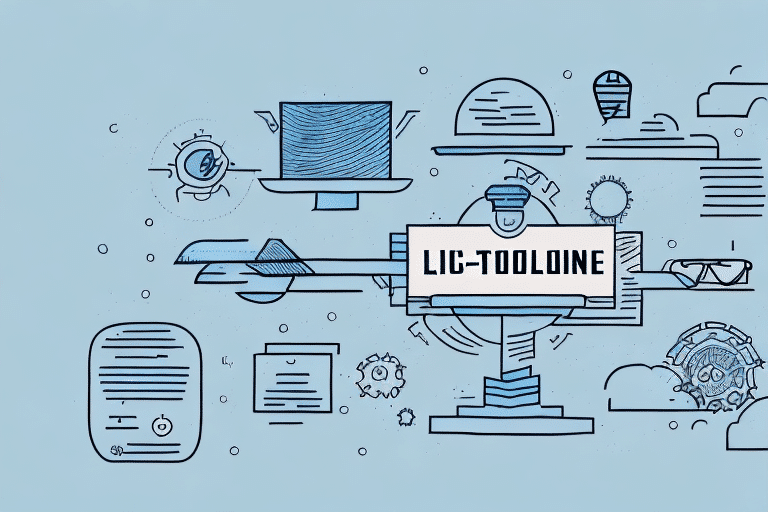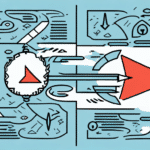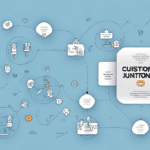Why Customer Retention is Vital for Business Success
In today's competitive marketplace, acquiring new customers is essential, but not sufficient alone to sustain a thriving business. Customer retention ensures a stable revenue stream and cultivates a loyal customer base, which is pivotal for long-term success. According to a study by Harvard Business Review, increasing customer retention rates by just 5% can boost profits by 25% to 95%.
The Economic Benefits of Retaining Customers
- Cost Efficiency: Retaining existing customers is significantly cheaper than acquiring new ones, with acquisition costs being up to five times higher.
- Higher Lifetime Value: Loyal customers tend to spend more over their lifetime, enhancing overall profitability.
- Word-of-Mouth Referrals: Satisfied customers are more likely to refer new clients, acting as brand ambassadors.
Building a Loyal Customer Base
Loyal customers not only provide steady revenue but also offer valuable feedback that can drive product and service improvements. Investing in customer retention strategies fosters long-term relationships, enhancing brand reputation and customer satisfaction.
Understanding Your Customers' Needs and Preferences
To effectively retain customers, businesses must deeply understand their customers' needs and preferences. This understanding allows for the creation of tailored experiences that resonate with each individual, fostering loyalty and continuous engagement.
Conducting Comprehensive Customer Research
Utilize various methods such as surveys, interviews, and data analytics to gather insights into customer behavior and preferences. Tools like Qualtrics and SurveyMonkey can aid in collecting and analyzing customer data effectively.
Analyzing Customer Data
Leverage customer data, including purchase history and interaction patterns, to identify trends and preferences. Platforms like Salesforce offer robust analytics tools to help interpret this data and inform retention strategies.
Designing an Effective Customer Retention Form
A well-designed customer retention form is crucial for collecting meaningful data that can inform your retention strategies. The form should be user-friendly, concise, and incentivize customers to provide honest feedback.
Key Elements of a Retention Form
- Clarity: Use clear and straightforward language to ensure customers understand the purpose of the form.
- Conciseness: Keep the form short by asking only essential questions to respect the customer's time.
- Incentives: Offer rewards such as discounts or exclusive content to encourage form completion.
Optimal Timing and Placement
Present the retention form at strategic points, such as after a purchase or a positive customer service interaction. Ensure the form is easily accessible on your website and mobile platforms to maximize response rates.
Maximizing Customer Engagement with Your Retention Form
Engagement is a critical factor in the success of customer retention forms. Engaged customers are more likely to provide valuable feedback and remain loyal to your brand.
Personalization and User Experience
Personalize the form by addressing customers by their names and referencing their past interactions. A personalized approach makes customers feel valued and increases the likelihood of form completion.
Visual Appeal and Ease of Use
Design the form with a clean layout, using easy-to-read fonts and colors that align with your brand. Ensure the form is mobile-responsive and quick to complete to enhance user experience.
Follow-Up Communication
After a customer submits the retention form, send a thank-you message or follow-up communication to acknowledge their input. This gesture reinforces their value to your business and encourages ongoing engagement.
Leveraging Customer Data to Enhance Retention Strategies
Collected customer data is a goldmine for developing effective retention strategies. Proper analysis and utilization of this data can lead to personalized experiences and optimized business strategies.
Identifying Patterns and Trends
Analyze data to uncover patterns such as purchasing behaviors, preferred products, and service preferences. Tools like Tableau can help visualize and interpret data trends effectively.
Personalizing Customer Experiences
Use insights from customer data to tailor experiences, such as personalized recommendations or targeted promotions, which can significantly enhance customer satisfaction and loyalty.
Addressing Customer Pain Points
Identify common reasons for customer churn by analyzing feedback and behavior data. Addressing these pain points proactively can prevent customer attrition and improve overall satisfaction.
Measuring Success with Key Retention Metrics
To evaluate the effectiveness of your retention strategies, it's essential to track and analyze key metrics. These metrics provide insights into what strategies are working and where improvements are needed.
Essential Retention Metrics
- Customer Lifetime Value (CLV): Measures the total revenue a business can expect from a single customer over their entire relationship.
- Churn Rate: The percentage of customers who stop using your service over a specific period.
- Net Promoter Score (NPS): Gauges customer satisfaction and loyalty by asking how likely they are to recommend your business to others.
Tracking and Analyzing Metrics
Regularly monitor these metrics using tools like Google Analytics and Zoho Analytics to assess the performance of your retention strategies and make data-driven decisions.
Overcoming Common Challenges in Customer Retention
Even with well-designed strategies, businesses often face challenges in retaining customers. Addressing these challenges requires a proactive and strategic approach.
Identifying Customer Motivations
Understanding what motivates your customers to stay or leave is crucial. Use retention forms and feedback mechanisms to gather insights into customer motivations and address them effectively.
Maintaining Consistent Customer Experiences
Ensure a seamless and consistent experience across all touchpoints, including online platforms, customer service, and in-store interactions. Consistency builds trust and reinforces customer loyalty.
Sustaining Long-Term Engagement
Implement ongoing engagement strategies such as loyalty programs, regular communication, and personalized offers to keep customers engaged and invested in your brand.
Integrating Retention Strategies with Marketing Channels
Integrating your customer retention efforts with various marketing channels amplifies their effectiveness and ensures a cohesive customer experience.
Email Marketing Integration
Use email campaigns to promote your retention forms, share personalized offers, and communicate regularly with customers to keep them engaged.
Social Media Engagement
Leverage social media platforms to interact with customers, gather feedback, and promote retention initiatives. Interactive content and timely responses can enhance customer relationships.
CRM System Integration
Integrate your retention forms with Customer Relationship Management (CRM) systems like Salesforce to centralize customer data and streamline retention efforts.
Implementing Successful Customer Retention Programs
Effective customer retention programs are tailored to your business and customer base. Learning from successful examples can provide valuable insights into designing your own programs.
Incentive-Based Programs
Programs that offer rewards, discounts, or exclusive access to products/services for completing retention forms can significantly boost engagement and loyalty.
Loyalty Programs
Develop loyalty programs that reward customers for repeated business. Examples include point-based systems, tiered rewards, and exclusive member benefits.
Case Studies and Success Stories
Analyze case studies of businesses with successful retention strategies. Understanding their approaches can inspire and inform your own retention initiatives.
Best Practices for Analyzing and Utilizing Retention Data
To maximize the effectiveness of your retention efforts, adhere to best practices in data analysis and utilization.
Setting Clear Retention Goals
Define specific, measurable goals for your retention strategies to ensure focused and effective efforts. Goals might include reducing churn rate by a certain percentage or increasing CLV.
Segmenting Customer Data
Segment your customer base based on behavior, preferences, and demographics to tailor retention strategies effectively for different groups.
Creating Actionable Insights
Translate data analysis into actionable strategies that address identified issues and leverage opportunities for enhancing customer retention.
Maintaining Long-Term Customer Relationships
Building and maintaining long-term relationships with customers is the cornerstone of sustained business success. Effective retention strategies foster these enduring connections.
Providing Exceptional Customer Service
Outstanding customer service fosters trust and satisfaction, encouraging customers to remain loyal. Train your team to be responsive, empathetic, and solution-oriented.
Continuous Communication
Maintain regular communication with customers through newsletters, personalized messages, and updates to keep them engaged and informed about your offerings.
Showing Appreciation
Express gratitude to your customers through thank-you notes, exclusive offers, and recognition programs. Feeling valued strengthens their commitment to your brand.
Conclusion
Creating an effective customer retention form is a critical component of a comprehensive retention strategy. By understanding your customers' needs, designing user-friendly forms, maximizing engagement, leveraging data, and overcoming common challenges, you can build and maintain a loyal customer base. Implementing these strategies not only enhances customer satisfaction but also drives long-term business growth and profitability.




















